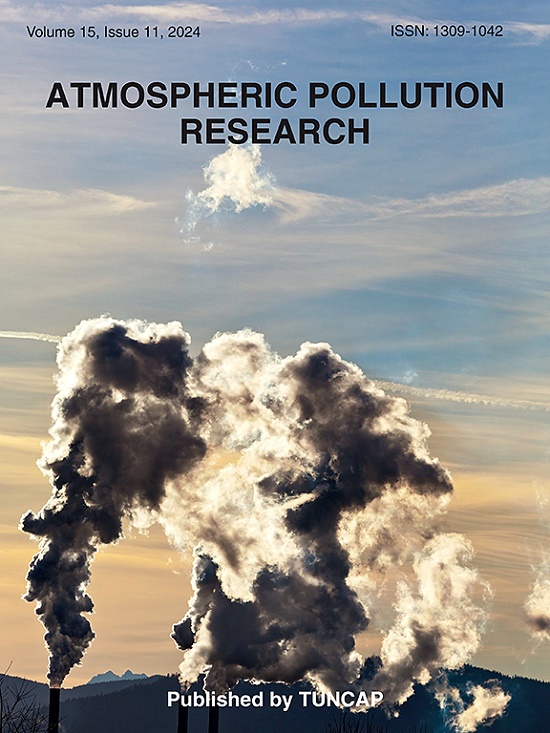The input-optimized and supplemented MEGAN improves biogenic volatile organic compounds estimation accuracy in China
IF 3.5
3区 环境科学与生态学
Q2 ENVIRONMENTAL SCIENCES
引用次数: 0
Abstract
To reduce the uncertainty in biogenic volatile organic compound (BVOC) emission estimates by MEGAN model, this study introduces targeted optimizations in the input conditions driven by plant functional types (PFTs), emission factors (EFs), and leaf area index (LAI), and supplements the missing BVOC emissions from urban green spaces (U-BVOC emissions). To verify the optimization effect of the input-improved MEGAN, the study conducted a comparative validation of the estimated BVOC emission levels in representative regions of northern and southern China using formaldehyde vertical column densities and accumulation-based estimates through stock volume conversion. The results indicate that the input-improved MEGAN can provide more reasonable BVOC estimates with a more notable improvement in the southern region, and the estimated isoprene emissions show better spatiotemporal correlation with formaldehyde vertical column densities. The optimization of PFT + EF and LAI input conditions both effectively improve the model's estimation accuracy. Although the U-BVOC emissions are significantly lower than the BVOC emissions from non-urban environment, the newly added U-BVOC emission inventory is expected to help improve the performance of existing air quality models in simulating O3 and particulate matter pollution in urban areas.

投入优化和补充后的MEGAN提高了中国生物源性挥发性有机物估算的准确性
为了减少MEGAN模型估算生物源性挥发性有机化合物(BVOC)排放的不确定性,本研究引入了由植物功能类型(PFTs)、排放因子(EFs)和叶面积指数(LAI)驱动的输入条件的针对性优化,并补充了缺失的城市绿地BVOC排放(U-BVOC排放)。为了验证投入改进MEGAN的优化效果,本研究利用甲醛垂直柱密度和基于蓄积量的蓄积量估算,对中国北方和南方代表性地区的BVOC排放水平进行了对比验证。结果表明,投入改进后的MEGAN可以提供更合理的BVOC估算值,且在南部地区改善更显著,异戊二烯排放量估算值与甲醛垂直柱密度具有更好的时空相关性。PFT + EF和LAI输入条件的优化都有效地提高了模型的估计精度。虽然U-BVOC排放量明显低于非城市环境的BVOC排放量,但新增加的U-BVOC排放清单有望改善现有空气质量模型在模拟城市地区O3和颗粒物污染方面的性能。
本文章由计算机程序翻译,如有差异,请以英文原文为准。
求助全文
约1分钟内获得全文
求助全文
来源期刊

Atmospheric Pollution Research
ENVIRONMENTAL SCIENCES-
CiteScore
8.30
自引率
6.70%
发文量
256
审稿时长
36 days
期刊介绍:
Atmospheric Pollution Research (APR) is an international journal designed for the publication of articles on air pollution. Papers should present novel experimental results, theory and modeling of air pollution on local, regional, or global scales. Areas covered are research on inorganic, organic, and persistent organic air pollutants, air quality monitoring, air quality management, atmospheric dispersion and transport, air-surface (soil, water, and vegetation) exchange of pollutants, dry and wet deposition, indoor air quality, exposure assessment, health effects, satellite measurements, natural emissions, atmospheric chemistry, greenhouse gases, and effects on climate change.
 求助内容:
求助内容: 应助结果提醒方式:
应助结果提醒方式:


